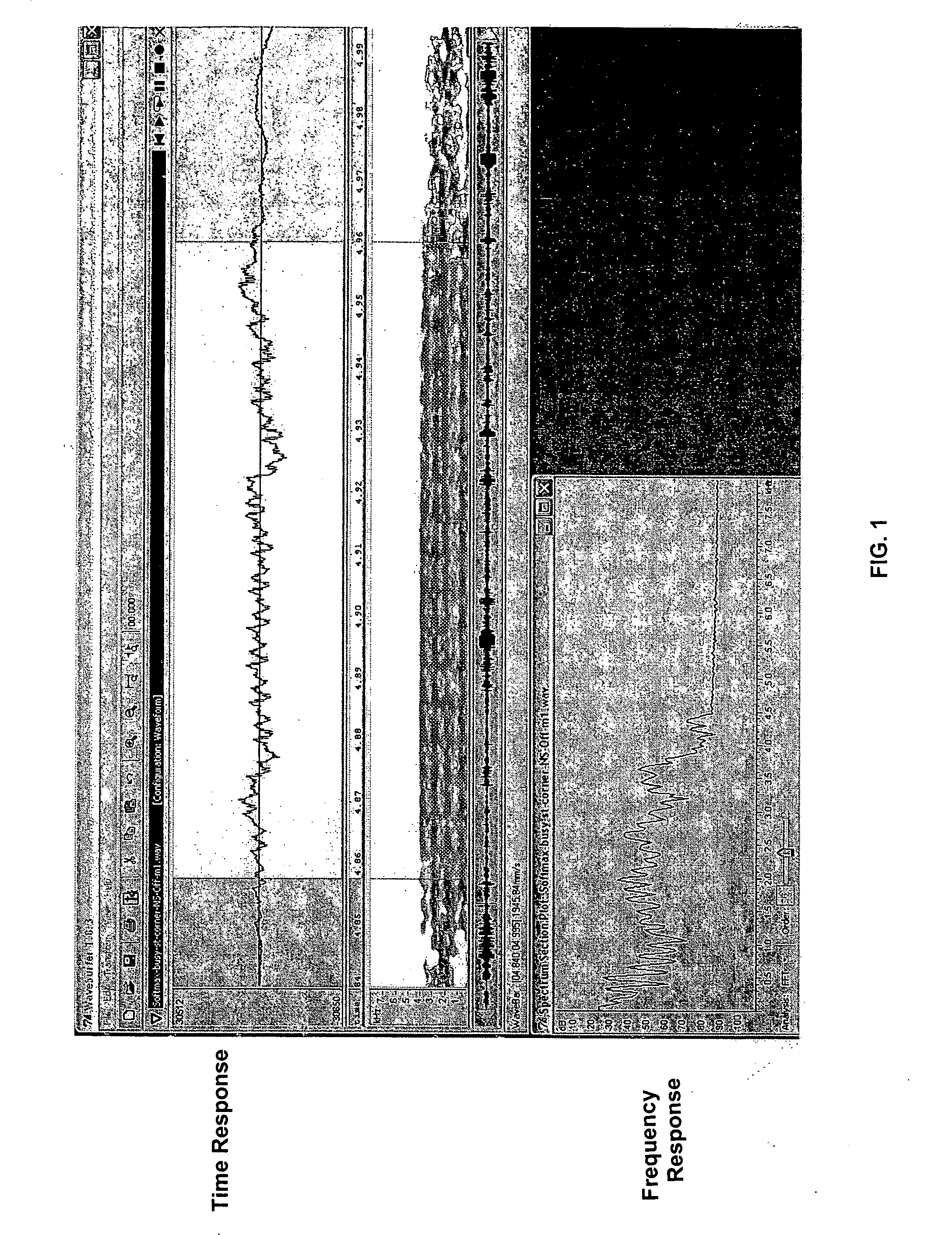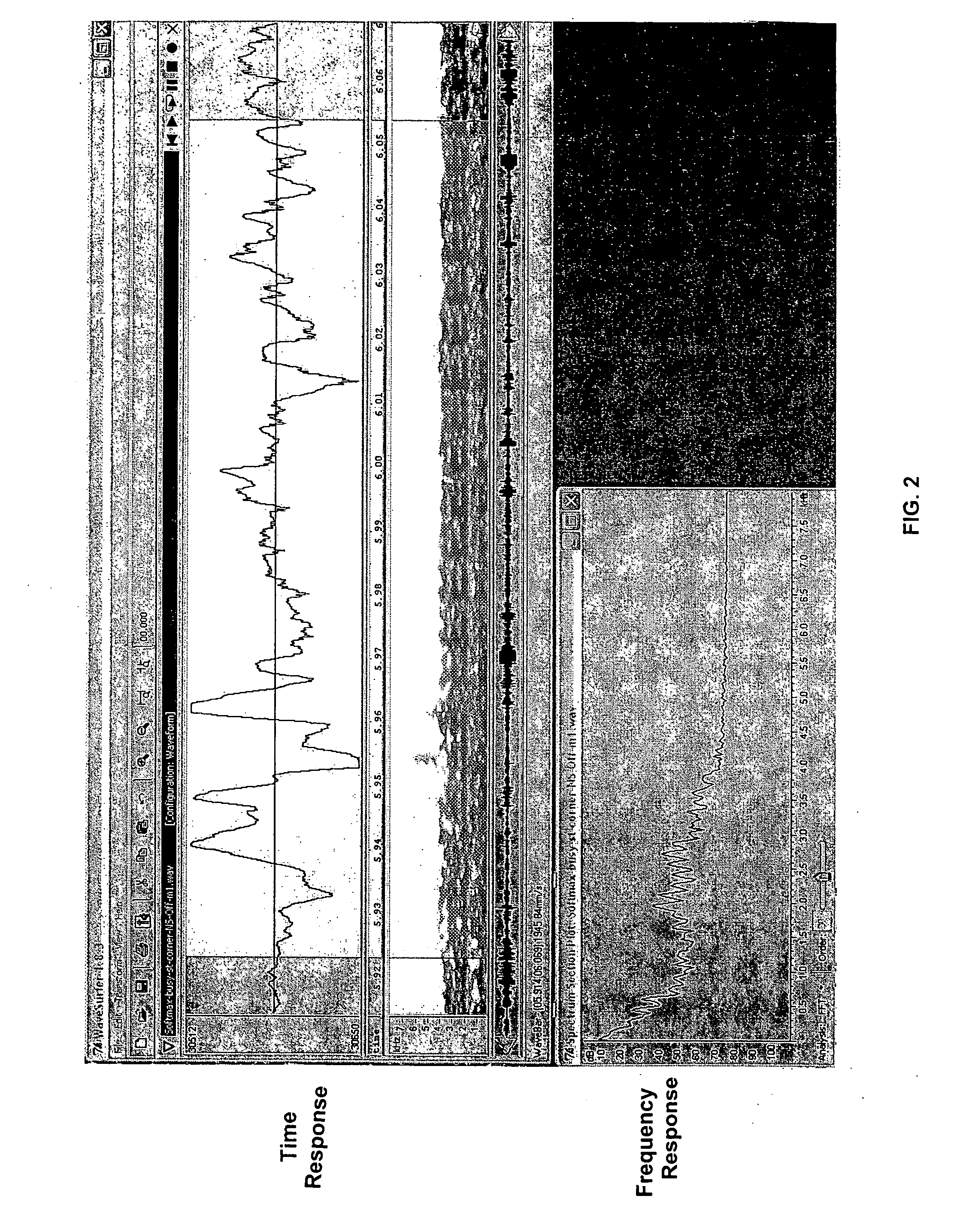Low frequency noise reduction circuit architecture for communications applications
- Summary
- Abstract
- Description
- Claims
- Application Information
AI Technical Summary
Benefits of technology
Problems solved by technology
Method used
Image
Examples
Embodiment Construction
[0034]While the present invention is described herein with reference to illustrative embodiments for particular applications, it should be understood that the invention is not limited thereto. Those skilled in the art with access to the teachings provided herein will recognize additional modifications, applications, and embodiments within the scope thereof and additional fields in which the present invention would be of significant utility.
[0035]In voice communication systems, significant low frequency noise can affect the fidelity of the audio signals transmitted. FIG. 1 is a plot of the time response 110 and the frequency response 120 of a typical speech segment without wind noise. FIG. 2 is a plot of the time response 210 and frequency response 220 of a typical speech segment, but now with an added strong wind noise component. A strong wind noise can have a power level approximately 10 dB to 30 dB higher than the typical talker voice level. As noted by comparing FIGS. 1 and 2, wi...
PUM
 Login to View More
Login to View More Abstract
Description
Claims
Application Information
 Login to View More
Login to View More - R&D
- Intellectual Property
- Life Sciences
- Materials
- Tech Scout
- Unparalleled Data Quality
- Higher Quality Content
- 60% Fewer Hallucinations
Browse by: Latest US Patents, China's latest patents, Technical Efficacy Thesaurus, Application Domain, Technology Topic, Popular Technical Reports.
© 2025 PatSnap. All rights reserved.Legal|Privacy policy|Modern Slavery Act Transparency Statement|Sitemap|About US| Contact US: help@patsnap.com



